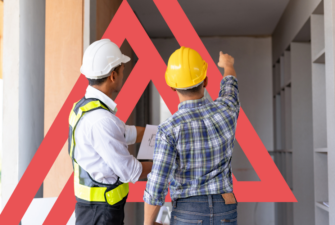
Repairs: translating the messages – sharing the practice
In this, our second translating the message / sharing the practice bulletin we are focussing on REPAIRS.
As we approach the end of another week in ‘lockdown’ these continue to be challenging times for all organisations, especially in the housing sector, where we are supporting some of the most vulnerable people in the community. Yet housing providers have a key role to play in helping to secure the ongoing provision of critical services.
At ARK, we are playing our part, supporting our clients, signposting to the latest advice and using the knowledge and expertise within our team to help translate the messages about what we need to be doing into the right practices on the ground. The idea is to help our customers make well informed and considered decisions.
Policy Message
The Government has made it quite clear; tenants and customers’ rights to a decent, warm and safe place to live have not changed. But what has, is the way in which housing providers are going to have to go about meeting their legal and regulatory obligations. Government guidance at this time is to access tenants’ properties only to fix or inspect serious or urgent issues and take a pragmatic common-sense approach to non-urgent repairs.
Best Practice Guidance
- You should define and possibly re-define which repairs are ‘serious or urgent’. This should be more than you would usually classify as an emergency to reflect the potentially prolonged duration of the current situation
- Devise and put in place a clear risk assessment process for accessing tenants’ homes. This should have a series of steps and a process map that takes into account the need to protect those who are self-isolating as well as the health and wellbeing of your operatives
- Continue to log all repairs, even if you aren’t going to attend to them straight away. You will need a clear log of these for ‘catch-up’ purposes
- You may also need to put in arrangements for re-contacting tenants about something they have already reported to check that it is still okay to be left unattended and that the situation isn’t becoming more critical
- Use neighbourhood/repairs teams to continue to undertake estate/property risk assessments of external/communal areas to ensure potentially dangerous situations don’t go unreported
- Now could be the time to explore moving more staff towards multi-trade using the current voids as training opportunities
- Start planning how you are going to deal with your catch-up repairs once the lockdown is lifted or partially lifted. There will be pent up demand from tenants
- Stay in close contact with your contractors and plan the return to work with them
- We suggest ‘batching’ repairs on a geographical basis to ensure the best use of resources and monitoring ‘demand’ by trade so you can call in additional capacity in those areas if necessary.
Summary Example – Repairs Risk Assessment Process
| STEP | ASSESSMENT PROCESS | |
| Step 1 – Initial risk assessment when taking the repair |
|
|
| Step 2 – Operative doorstep risk assessment |
|
If you would like to talk about any aspect, would like to know more or discuss how our team could assist your organisation in putting appropriate repairs approaches or risk assessments in place please contact us ark@arkconsultancy.co.uk
News & Insights
Read the latest housing sector news, blogs, and commentary from ARK.

Building Safety
By Luke Beard ·The deadline for registering an existing higher risk building (HRB) with the regulator and submitting the required key building information …

Are you ready for the Supported Housing (Regulatory Oversight) Act 2023?
By Nick Sedgwick ·If you are a supported housing provider, you need to be aware of the new regulations that are about to …

International Women’s Day 2024
By Chris Seeley ·The theme of International Women’s Day 2024 is the question ‘What does it mean to truly inspire inclusion?’, we asked our …
Subscribe to our newsletters for the latest industry insights
Our newsletters and reports will keep you updated on topical issues from the sector as well as what’s happening at ARK.
